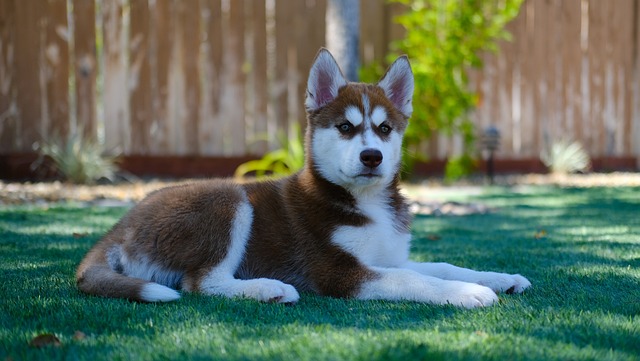
How can I tell if my dog's heatstroke is serious
Let’s be real: It’s a sticky August morning in Los Angeles, and you took your 2-year-old Golden Retriever, Max, for a walk a little later than usual
The Husky, a dog breed with unique charm, has won the hearts of numerous pet owners with its handsome appearance and lively personality. However, for novice owners who have just entered the "Husky - raising circle," knowing when a Husky reaches adulthood is an important lesson in the process of raising them. The time point of its adulthood is not only closely related to physical development but also profoundly affects the growth of its behavior and psychology.
When Is a Husky Considered an Adult?
A Husky is generally considered an adult at around 1 year old. Huskies reach sexual maturity at around 8 months old, while their physical development is usually not fully mature until 1.5 to 2 years. Specifically, a Husky reaches physical maturity at around 12 months old, which means it is considered an adult. Additionally, the maturity period of a Husky is relatively late, and it usually does not fully grow up until around 1 to 1.5 years old.
Huskies are an active and energetic dog breed, full of boundless energy and curiosity. The younger they are, the higher their activity level. During the growth process, Huskies need sufficient exercise and activities to meet their physical needs. As they grow older, the activity level of Huskies gradually decreases, and they become calmer and more stable.
In addition to physical maturity, the behavioral and psychological maturity of Huskies also takes time. Before reaching adulthood, Huskies may exhibit some childish and naughty behaviors. They may bite things, run around, and bark loudly. These behaviors are normal because they have not fully learned to control their actions.

As time passes, Huskies will gradually learn to control their behaviors better. They will become more mature and steady, and be more easily get along with humans and other animals. This requires the patience of the owner and the correct training methods to guide the behavior of the Husky.
Sharing of Key Points in Raising Huskies at Different Ages
Generally speaking, the first six months after the birth of a Husky puppy are very crucial because this stage determines the dog's personality.
1、From 4 - 12 weeks after birth, Husky puppies start to run and jump, and the immunity from the mother dog gradually fades. So, it is time to vaccinate them and start basic training such as teaching the Husky to use the toilet.
2、After 4 months old, Huskies can be taken for walks, allowing them to start learning the rules of human society. Instructions other than diet and toilet - training can also be taught. From 4 - 6 months after birth, it is approximately equivalent to 12 or 13 years old in human terms. The dog's personality is very easy to train and shape during this period.
3、After 8 months old, Huskies enter the estrus period. At the same time, when the dog is one year old, the dog food can be changed from puppy - specific to adult - specific.
4、After 5 years old, Huskies should have a health check once a year. Also, after becoming an adult, sufficient walking exercise is needed to address the problem of obesity.
5、When a Husky is 5 years old, it is equivalent to 40 years old in human terms. At this time, it should receive a health check once a year, which is equivalent to having a health check every four to five years in human terms.
In conclusion, a Husky generally enters the adult stage at around 1 year old. However, it takes more time for it to achieve full physical and psychological maturity. Knowing the growth rhythm of Huskies and the key points in raising them at different ages is like having an exclusive parenting guide. With this knowledge, we can better accompany the growth of Huskies, ensuring their health and well - being at every stage. From the careful care of puppies to the meticulous attention to adult dogs, every aspect cannot be ignored.

Let’s be real: It’s a sticky August morning in Los Angeles, and you took your 2-year-old Golden Retriever, Max, for a walk a little later than usual

You're enjoying a summer afternoon at the park when you notice your dog has stopped panting and appears disoriented - their gums are bright red

Let’s paint the picture: You’re in your Denver apartment, watching your 4-year-old Boston Terrier, Ruby, plop down mid-play session with her favorite toy

Many dog owners notice their pets nails seem shorter after regular walks,but how much does this daily activity actually help?The answer depends on where you walk—concrete sidewalks or asphalt streets gently file nails as a dog's paws hit the ground

Most dog owners notice their pup scooting across the carpet at some point, but few connect it to impacted anal glands. These small sacs near a dog’s rectum secrete a scent for marking territory

Most vets agree that regular dog teeth cleaning is key to avoiding painful dental issues later. For healthy adult dogs, a professional cleaning at the vet’s office every 12 to 18 months usually works well.